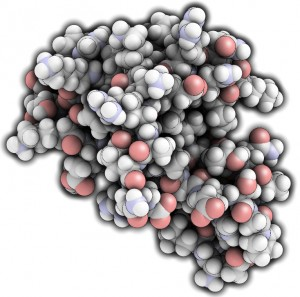
此内容主要是为了对Pymol进行选择的小结总结,完全的内容可以查看PymolWiki。
原子选择的命名
1
2
3
4
5
6
7
8
9
|
#表达式
select selection-name,selection-expression
#例子
select bb,name c+o+n+ca #创建名称“bb”的原子,包括“C”,“O”,“N”或者“CA”的原子
color red, bb #给bb赋予红色
hide lines, bb #隐藏线状representation
show sticks, bb #棒状展示
zoom bb #聚焦bb
|
常用选择
| –单字母– |
–短选择– |
–描述– |
| all |
* |
PyMOL中加载全原子 |
| none |
none |
啥也不选 |
| hydro |
h. |
所有氢原子,足以后面有. |
| hetatm |
het |
加载HETATM标签 |
| visible |
v. |
选择所有可见的原子 |
| polymer |
pol. |
聚合物 |
| backbone |
bb. |
骨架原子 |
| sidechain |
sc. |
侧链原子 |
| center |
|
居中 |
| origin |
|
旋转 |
| orgainic |
org. |
所有非聚合的有机化合物(如:配体,buffers等等) |
| inorganic |
|
非有机分析 |
| metals |
|
金属离子(PyMOL1.6.1以上) |
| solvent |
|
溶剂分析,包括HOH,WAT,H2O,TIP,SOL |
1
2
3
4
5
6
7
8
9
10
|
#示例
color blue, all #所有颜色标记为blue
color blue, *
hide hydro #所有氢原子都隐藏
hide h.
show spheres, hetatom #所有定义为HETATOMS的原子
show spheres, het
|
特征选择
| –匹配参数选择– |
–短字符– |
–例子和解释– |
| symbol |
e. |
一到两个化学特征字符select polar,symbol O+N |
| name |
n. |
最高4个字符的蛋白或者核酸原子select carbons,name CA+CB+CG+CD |
| resn |
r. |
残基名select aas, resn ASP+GLU+ASN 核酸名select bases,resn A+G |
| resi |
i. |
残基编号select mults10,resi 1+10+100``select nterm,resi 1-10 |
| alt |
alt |
alternate-conformation-identifier-list select altconf,alt A+"" |
| chain |
c. |
选择相应的链select firstch,chain A |
| segi |
s. |
选择片段特征select ligand,segi lig |
| flag |
f. |
从0到31的单整数select f1,flag 0 |
| numeric_type |
nt. |
单个整数select typel, nt. 5 |
| text_type |
tt. |
type-stringselect subset,text_type HA+HC |
| id |
id |
单整数外部索引select idno,id 23 |
| index |
idx. |
单整数内部索引select intid,index 11 |
| ss |
ss |
二级结构select allstrs,ss H+S+L+"" |
| label |
|
原子注释上标签如: label "Hello World" |
数字选择表
| –数字选择– |
–短字符– |
–参数和例子– |
| b |
b |
beta因子select fuzzy,b>10 |
| q |
q |
占有率值select lowcharges,q>0.50 |
| formal_charge |
fc. |
形成电荷值select doubles,fc.=-1 |
| partial_charge |
pc. |
部分电荷值select hicharges,pc.>1 |
1
2
3
4
|
# 例子
select nterm,resi 1+2+3
select nterm,resi 1-3
select unstruct,ss " "
|
更多例子:
根据PDB原子编号进行选择
若你的残基id为负的,则需要添加\: 如下选择残基-55的原子
取反:
选择操作和修饰表格
| –操作– |
–短字符– |
–影响– |
| not s1 |
!s1 |
不包括select sidechains,!bb |
| s1 and s2 |
s1&s2 |
选择既在s1又在s2中的原子select far_bb,bb&farfrm_ten |
| s1 or s2 |
s1|s2 |
选择s1或者s2中的原子(也就是包含全部的s1和 s2原子)select all_prot,bb|sidechain |
| s1 in s2 |
|
选择s1中的那些原子,其identifiers (name, resi, resn, chain, segi) 全部符合s2中对应的原子select same_atms,pept in prot |
| s1 like s2 |
s1 |.s2 |
选择s1中的那些原子,其identifiers (name, resi) 符合s2中对应的原子select similar_atms,pept like prot |
| s1 gap X |
|
选择那些原子,其van der Waals半径至少和s1的 van der Waals半径相差Xselect farfrm_ten,resi 10 gap 5 |
| first s1 |
|
S1中的第一个原子 |
| last s1 |
|
S1中的最后一个原子 |
| s1 around X |
s1 a.X |
选择以s1中任何原子为中心,X为半径,所包括的所 有原子 select near_ten,resi 10 around 5 |
| s1 expand |
s1 x.X |
选择以s1中任何原子为中心,X为半径,然后把s1 扩展至该新的范围所包含的所有原子 select near_ten_x,near_ten expand 3 |
| s1 within X of s2 |
s1 w.X of s2 |
选择以s2为中心,X为半径,并包含在s1中的原子 select bbnearten,bb w. 4 of resi 10 |
| byres s1 |
br. s1 |
扩展完整的分子select complete_mol, bm. bbnear10 |
| bymolecule s1 |
bm.s1 |
故名思义,下同 |
| byfragment s1 |
bf. s1 |
select complete_frag, bf. bbnear10 |
| bysegment s1 |
bs. s1 |
select complete_seg, bs. bbnear10 |
| byobject s1 |
bo. s1 |
把选择扩展到全部object select near_obj, bo. near_res |
| bycell s1 |
|
|
| byring s1 |
|
1.8.2新功能select rings,byring (all) |
| neighbor s1 |
nbr. s1 |
选择直接和s1相连的原子.select vicinos,neighbor resi 10 |
| bound_to s1 |
bto. s1 |
|
| s1 extend X |
s1 xt. X |
selecr connect_x,near10 extend 3 |
| pepseq SEQ |
ps. SEQ |
select 1tvn and ps. FATEW |
| rep rep |
|
select sele,rep spheres |
大量快速选择
1
|
select pept and segi lig and chain b and resi 142 and name ca
|
可以压缩成如下格式:
1
|
select /pept/lig/b/142/ca
|
化学分类选择
| 操作 |
短字母 |
注释 |
| organic |
org. |
非聚合物有机复合物(eg. ligands,buffers) |
| inorganic |
ino. |
非有机复合物 |
| solvent |
sol. |
水分子 |
| polymer |
pol. |
蛋白或者核酸 |
| polymer.protein |
|
蛋白 |
| polymer.nucleic |
|
核酸 |
| guide |
|
蛋白CA和核酸C4*/C4' |
| hetatm |
|
PDB HETATM记录 |
| hydrogens |
h. |
氢原子 |
| backbone |
bb. |
骨架 |
| sidechain |
sc. |
侧链 |
| metals |
|
金属 |
| donors |
don. |
氢键供体 |
| acceptors |
acc. |
氢键受体 |
坐标选择
| 操作 |
短字母 |
注释 |
| state |
|
原子所处的状态例如:state 123 |
| present |
pr. |
现在的状态 |
| x,y,z |
|
模型空间坐标,例如:x<12 |
| center/origin |
|
选择中心/旋转的伪原子 |
